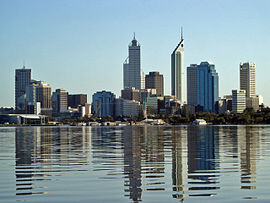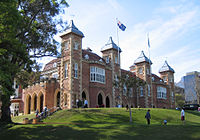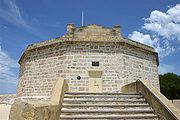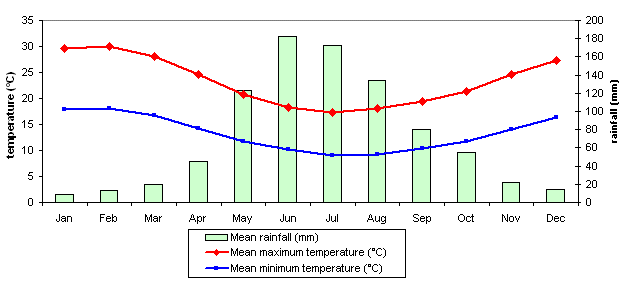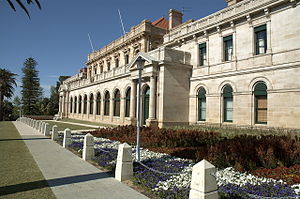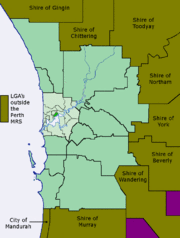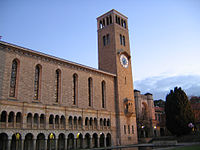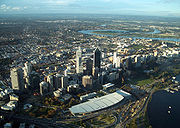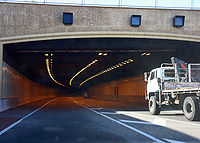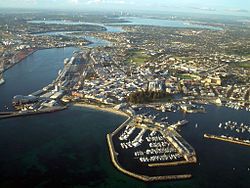
Perth
Did you know...
SOS believes education gives a better chance in life to children in the developing world too. Child sponsorship helps children one by one http://www.sponsor-a-child.org.uk/.
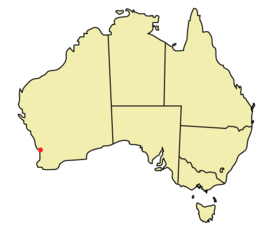
Perth is the capital and largest city of the Australian state of Western Australia, and the fourth-largest city in Australia, with a population of 1,554,769 (2007 estimate). One of its LGAs, the City of Perth, is currently the fastest growing area in Australia in percentage terms (10% per year).
Perth was founded on 11 June 1829 by Captain James Stirling as the political centre of the free settler Swan River Colony. It has continued to serve as the seat of Government for Western Australia to the present day.
The metropolitan area is located in the south west of the continent between the Indian Ocean and a low coastal escarpment known as the Darling Range. The central business district and suburbs of Perth are situated on the Swan River.
History
Prehistory
Before European settlement the area had been inhabited by the Whadjuk Noongar people for over 40,000 years, as evidenced by archaeological findings on the Upper Swan River. These Aborigines occupied the southwest corner of Western Australia, living as hunter-gatherers. The lakes on the coastal plain were particularly important to them, providing both spiritual and physical sustenance.
Rottnest, Carnac and Garden Islands were also important to the Noongar. About 5,000 years ago the sea levels were low enough that they could walk to the limestone outcrops.
The area where Perth now stands was called Boorloo by the Aboriginals living there at the time of their first contact with Europeans in 1827. Boorloo formed part of Mooro, the tribal lands of the Yellagonga, one of several groups based around the Swan River and known collectively as the Whadjuk. The Whadjuk were part of a larger group of thirteen or more tribes which formed the south west socio-linguistic block known as the Noongar (The People), also sometimes called the Bibbulmun.
On 19 September 2006, the Federal Court of Australia brought down a judgment recognising Noongar native title over the Perth metropolitan area, in the case of Bennell v State of Western Australia [2006] FCA 1243.
Early European sightings
The first documented European sighting of the region was made by the Dutch Captain Willem de Vlamingh and his crew on 10 January 1697. Subsequent sightings between this date and 1829 were made by other Europeans, but as in the case of the sighting and observations made by Vlamingh, the area was considered to be inhospitable and unsuitable for the agriculture which would be needed to sustain a settlement
The Swan River Colony
Although the British Army had established a base at King George Sound (later Albany) on the south coast of western Australia in 1826 in response to rumours that the area would be annexed by France, Perth was the first full scale settlement by Europeans in the western third of the continent. The British colony would be officially designated Western Australia in 1832, but was known informally for many years as the Swan River Colony after the area's major watercourse.
On 4 June 1829, newly arriving British colonists had their first view of the mainland and Western Australia's Foundation Day has since been recognised by a public holiday on the first Monday in June each year. Captain James Stirling, aboard the Parmelia, said that Perth was "as beautiful as anything of this kind I had ever witnessed." On 12 August that year, Mrs. Helen Dance, wife of the Captain of the second ship Sulphur, cut down a tree to mark the founding of the town.
It is clear that Stirling had already selected the name Perth for the capital well before the town was proclaimed, as his proclamation of the colony, read in Fremantle on 18 June, ended "[g]iven under my hand and Seal at Perth this 18th Day of June 1829. James Stirling Lieutenant Governor" The only information on the source of the name comes from Fremantle's diary entry for 12 August, which records that they "named the Town Perth according to the wishes of Sir George Murray." Murray was born in Perth, Scotland, and was in 1829 Secretary of State for the Colonies and Member for Perthshire in the British House of Commons. It is therefore often asserted that the name was given in Murray's honour.
Beginning in 1831, hostile encounters between the British settlers and Aborigines of the local Noongar tribe – both large-scale land users with conflicting land value systems – increased considerably as the colony grew. This violent phase of the region's history culminated in a series of events in which the British overcame the indigenous people, including the execution of Whadjuk tribal chief Midgegooroo, the death of his son Yagan in 1833, and the Battle of Pinjarra in 1834.
By 1843, when the tribal chief Yellagonga died, his tribe had begun to disintegrate after having been dispossessed of the land around the main settlement area of Perth. They retreated to the swamps and lakes north of the settlement area including Third Swamp, known to them as Boodjamooling. Boodjamooling continued to be a main campsite for the remaining Noongar people in the Perth region, and was also used by travellers, itinerants, and homeless people. By the gold-rush days of the 1890s they were joined by miners who were en-route to the goldfields.
In 1850, Western Australia was opened to convicts at the request of farming and business people looking for cheap labour. Queen Victoria announced the city status of Perth in 1856.
Federation and beyond
After a referendum in 1900, Western Australia joined the Federation of Australia in 1901. It was the last of the Australian colonies to agree to join the Federation, and did so only after the other colonies had offered several concessions, including the construction of a transcontinental railway line to Perth (via Kalgoorlie) from the eastern states.
In 1933, Western Australia voted in a referendum to leave the Australian union, with a majority of two to one in favour of independence. However, an election held shortly before the referendum had turned out the incumbent "pro-independence" government, replacing it with a government which did not support the independence movement. Respecting the result of the referendum, the new government nonetheless petitioned the Agent General of United Kingdom for independence, where the request was simply ignored.
Perth has prospered by becoming a key service centre for the natural resource industries, being the closest city to huge reserves of gold, iron ore, nickel, alumina, manganese, diamonds, mineral sands, coal, oil, and natural gas. Most of the world's major resource and engineering companies have offices in Perth. Partially as a result of this influx, Perth has become highly ethnically diverse, with over 27% of inhabitants having been born overseas (495,240 persons) and a further 414,000 having an overseas born parent (2001 census). 11% speak a language other than English at home.
Geography
Perth is one of the most isolated metropolitan areas on Earth. The nearest city to Perth with a population over 1 million is Adelaide in South Australia, which is 2,104 kilometres (1,307 mi) away. Perth is geographically closer to East Timor and Jakarta, Indonesia, than it is to Sydney, Melbourne, and Brisbane. It is the antipode of Hamilton, Bermuda.
Central business district
The central business district of Perth is bounded by the Swan River to the south and east, with Kings Park on the western end, while the railway lines form a northern border. St Georges Terrace is the prominent street of the area with 1.3 million m² of office space in the CBD. Hay Street and Murray Street have most of the retail and entertainment facilities. The tallest building in the city is Central Park, which is the sixth tallest building in Australia, although it is to be surpassed by the BHP Tower in 2012. With the current resources-based boom the skyline will change dramatically with at least eleven 100 m+ buildings either being currently or soon to be built.
Geology and landforms
Perth is set on the Swan River, named after the native black swans in 1697 by Willem de Vlamingh, captain of a Dutch expedition. Traditionally, this water body has been known by local inhabitants as Derbal Yerrigan. The city centre and most of the suburbs are located on the sandy and relatively flat Swan Coastal Plain, which lies between the Darling Scarp and the Indian Ocean. The soils of this area are quite infertile. The metropolitan area extends to Yanchep in the north, Mandurah in the south, total distance of approximately 125 kilometres (78 mi) by road. From the Coast in the west to Mundaring in the east, a total distance of approximately 50 kilometres (30 mi) by road. This means that the area of Perth is over 1.5 million acres (6,100 km²).
The coastal suburbs take advantage of Perth's oceanside location and clean beaches. To the east, the city is bordered by a low escarpment called the Darling Scarp. Perth is on generally flat, rolling land - largely due to the high amount of sandy soils and deep bedrock. This abundance of sand has resulted in West Australians' being given the nickname sandgropers by the rest of the country. The Perth metropolitan area has two major river systems; the first is made up of the Swan and Canning Rivers. The second is that of the Serpentine and Murray Rivers, which discharge into the Peel Estuary at Mandurah.
Climate
Perth receives moderate though highly seasonal rainfall. Summers are generally hot and dry, lasting from late December to late March, with February generally being the hottest month of the year, making Perth a classic example of a Mediterranean climate. Summer is not completely devoid of rain with sporadic rainfall in the form of short-lived thunderstorms, weak cold fronts and on very rare occasions decaying tropical cyclones which can bring significant falls. The hottest ever recorded temperature in Perth was 46.2 °C (115 ° F) on 23 February 1991. Winters are relatively cool and rather moist, though the once reliable winter rainfall has been declining steadily in recent years. The coldest temperature recorded was -0.7 °C (30.7 °F) on 17 June 2006, and the only temperature ever recorded below the freezing point. The coldest temperature recorded in the Perth metropolitan area was -3.4 degrees Celsius on June 17, 2006 at Jandakot airport. Even in mid-winter, maximum daytime temperatures only occasionally fall below 16 °C (60 °F). Though most rainfall occurs during winter, the wettest day ever was unusually on 9 February 1992 when 121 millimetres (4.75 in) fell. On most summer afternoons a sea breeze, also known as " The Fremantle Doctor", blows from the south-west, cooling the city by up to 15°C.
| Jan | Feb | Mar | Apr | May | Jun | Jul | Aug | Sep | Oct | Nov | Dec | Year | ||
|---|---|---|---|---|---|---|---|---|---|---|---|---|---|---|
| Mean daily maximum temperature | 29.7 °C 85.5 °F |
30.0 °C 86.0 °F |
28.0 °C 82.4 °F |
24.6 °C 76.3 °F |
20.9 °C 69.6 °F |
18.3 °C 64.9 °F |
17.4 °C 63.3 °F |
18.0 °C 64.4 °F |
19.5 °C 67.1 °F |
21.4 °C 70.5 °F |
24.6 °C 76.3 °F |
27.4 °C 81.3 °F |
23.3 °C 73.9 °F |
|
| Mean daily minimum temperature | 17.9 °C 64.2 °F |
18.1 °C 64.6 °F |
16.8 °C 62.2 °F |
14.3 °C 57.7 °F |
11.7 °C 53.1 °F |
10.1 °C 50.2 °F |
9.0 °C 48.2 °F |
9.2 °C 48.6 °F |
10.3 °C 50.5 °F |
11.7 °C 53.1 °F |
14.0 °C 57.2 °F |
16.3 °C 61.3 °F |
13.3 °C 55.9 °F |
|
| Mean total rainfall | 8.6 mm 0.34 in |
13.3 mm 0.52 in |
19.3 mm 0.76 in |
45.5 mm 1.79 in |
122.7 mm 4.83 in |
182.4 mm 7.18 in |
172.9 mm 6.81 in |
134.6 mm 5.30 in |
79.9 mm 3.14 in |
54.5 mm 2.15 in |
21.7 mm 0.85 in |
13.9 mm 0.55 in |
869.4 mm 34.23 in |
|
| Mean number of rain days | 2.9 | 2.7 | 4.3 | 7.6 | 13.8 | 17.2 | 18.2 | 17.2 | 14.0 | 11.1 | 6.5 | 4.2 | 119.6 | |
| Source: Bureau of Meteorology | ||||||||||||||
Governance
Perth houses the Parliament of Western Australia and the Governor of Western Australia. Under the new one-vote, one-value laws seats in city and country areas will be roughly of equal population size, which will mean that 42 of the Legislative Assembly's 59 seats will be based in Perth at the next state election. Perth is represented by 11 seats in the Federal House of Representatives, although some seats extend outside the Metropolitan area. The metropolitan area is divided into over 30 local government bodies. The City of Perth is the local government authority responsible for the Perth Central business district, however this covers a very small section of the Perth urban area.
Australia's High Court holds regular sittings in Perth, with permanent Federal Court operations. The highest court under Western Australian law, the Supreme Court is based in Perth, along with the District, Family and Magistrates' Courts.
The Metropolitan Region Scheme (MRS) is the legal land plan covering the Perth metropolitan region. It is a large town planning scheme for land use in the Perth metropolitan area. The MRS has been in operation since 1963 and provides the legal basis for planning in the Perth metropolitan region.
Demographics
Perth is Australia's fourth largest city, having overtaken Adelaide's population in the early 1980s. At the 2006 Census 1,445,079 persons resident in the Perth statistical area were enumerated.
| Perth Metropolitan Area Population by year ( ABS) |
|
| 1850 | 1,400 |
| 1861 | 3,507 |
| 1871 | 5,007 |
| 1881 | 5,044 |
| 1891 | 8,447 |
| 1901 | 27,553 |
| 1911 | 106,792 |
| 1921 | 154,873 |
| 1933 | 207,440 |
| 1947 | 272,528 |
| 1961 | 420,133 |
| 1971 | 641,800 |
| 1981 | 809,036 |
| 1991 | 1,142,646 |
| 2001 | 1,325,392 |
| 2006 | 1,445,079 |
Ethnic groups
In 2006, the largest ancestry groups in the Perth metropolitan areas were: English (534,555 or 28.6 per cent), "Australian" (479,174 or 25.6 per cent), Irish (115,384 or 6.2 per cent), Scottish (113,846 or 6.1 per cent), Italian (84,331 or 4.5 per cent) and Chinese (53,390 or 2.9 per cent). There were 3,101 Aboriginals in the city (0.2 per cent).
Perth's population is notable for the high proportion of British-born residents. At the 2006 Census 142,424 British-born Perth residents were counted, narrowly behind Sydney (145,261), despite having just 35% of the overall population of Sydney.
The ethnic make-up of Perth changed in the middle of the twentieth century, when significant numbers of Italian and Greek immigrants arrived in the city. Prior to this, Perth's population had been almost completely Anglo-Celtic in ethnic origin. As Fremantle was the first landfall in Australia for many migrant ships coming from Europe in the 1950s and 1960s, Perth started to experience a diverse influx which included Dutch, Germans, Croats, Serbs, Poles, Czechs, Russians, Ukrainians, and Macedonians and many others. The Italian influence in the Perth and Fremantle area has been substantial, evident in places like the "Cappuccino strip" in Fremantle featuring many Italian eateries and shops. In Fremantle the traditional Italian blessing of the fleet festival is held every year at the start of the fishing season. Suburbs surrounding the Fremantle area such as Spearwood and Hamilton Hill also contain high concentrations of Italians, Croatians and Portuguese. Perth also has a vibrant Jewish community — numbering 5,082 in 2006 — who emigrated primarily from eastern Europe and more recently from South Africa.
Another more recent wave of arrivals include European minorities from Southern Africa. The South Africa-born overtook those born in Italy to become the fourth largest birthplace group after 2001. By 2006, there were 18,825 South Africa-born in Perth, accounting for 1.3 per cent of the city's people. Many Afrikaners and Anglo-Africans from South Africa and Zimbabwe emigrated to Perth during the 1980s and 1990s, to the extent that the city has been described as "the Australian capital of South Africans in exile". The phrase "Packing for Perth" has become associated with South Africans who choose to emigrate abroad, sometimes regardless of the destination.
In the last three decades, South East Asia has become an increasingly important source of migrants, with communities from Malaysia, Indonesia, Singapore, Hong Kong, China, and India all now well-established. There were 53,390 persons of Chinese descent in Perth in 2006 — 2.9 per cent of the city's population.
The Indian community includes a substantial number of Parsees who emigrated from Bombay — Perth being the closest Australian city to India — and the India-born population of the city at the time of the 2006 census was 14,094 or 0.8 per cent. Perth is also home to the largest population of Anglo-Burmese in the world; many settled here following the Independence of Burma in 1948 and the city is now the cultural hub for Anglo-Burmese worldwide. Alongside the Anglo-Burmese, there is also a substantial Anglo-Indian population in Perth, who also settled in the city following the Independence of India.
Economy
Perth has a booming economy, primarily due to the rising demands for raw minerals from emerging economies, especially China. This has led to a mining boom, which is having a great impact not only for Perth, but for the whole state of Western Australia. From 2006-2007, mining accounted for 30% of the state's total output and 50% of the state's exports. In addition, Perth is so important to mining and energy projects that it controls about 80% or at least $A 11.7 B worth of Australia's total projects. As such, 25% of the world's largest mining companies have bases in Perth with Rio Tinto, Woodside Petroleum and BHP Billiton just to name a few. The economic growth rate in 2006 was more than that of China's which is already at a staggering 10%.
Having highly-skilled workers, bustling retail services and state of the art infrastructure, economic growth is expected to remain at the current rates for a while, or at least until China and other emerging economies are fully developed.
Perth being the heart of Western Australia in culture, business, tourism and retail services has consistent unemployment levels of less than 4%. As such, the city is drawing thousands of jobs providing accommodation for the many who flock back to the city centre.
As for tourists, more than 2 million interstate and international visitors inject millions into the local economy through hotel and retail services as many world cities are increasingly becoming service economies.
Education
Perth is home to four public universities: the University of Western Australia, Murdoch University, Curtin University of Technology, Edith Cowan University. There is also one private university, the University of Notre Dame.
The University of Western Australia, which was founded in 1911, is renowned as one of Australia's leading research institutions. The university's monumental neo-classical architecture, most of which is carved from white limestone, is a notable tourist destination in the city.
Curtin University of Technology is Western Australia's largest university by student population, and was known from its founding in 1966 until 1986 as the Western Australian Institute of Technology (WAIT) and had amalgamated with Western Australian School of Mines and the Muresk Institute. It has a rapidly growing research reputation and is the only Western Australian university to produce PhD recipients of the AINSE gold medal, the highest possible recognition for PhD level research excellence in Australia and New Zealand.
Murdoch University was established in the 1970s, and is Australia's largest campus in geographical area (2.27 square kilometres), necessary to accommodate Western Australia's only veterinary school.
Edith Cowan University was established in the early 1990s from the existing Western Australian College of Advanced Education (WACAE) which itself was formed in the 1970s from the existing Teachers Colleges at Claremont, Churchlands, and Mount Lawley. It incorporates the Western Australian Academy of Performing Arts (WAAPA).
The University of Notre Dame Australia was established in 1990. Notre Dame was established as a Catholic university with its lead campus in Fremantle and a large campus in Sydney. It is the only Western Australian University with a campus in another major Australian city. Its campus in Fremantle is set in the west end of Fremantle within historic port buildings built in the 1890s giving Notre Dame a distinct European University atmosphere. Though Notre Dame shares its name with the University of Notre Dame in Indiana USA, it is a separate school, claiming only "strong ties" with its American namesake. It is also the fastest growing University in Australia.
Colleges of TAFE provide trade and vocational training, including Diploma level courses. TAFE was formed in the 1970s to provide technical courses previously offered by WACAE.
Culture
Perth Cultural Centre is both an area of central Perth and the collective name for the main buildings of the Art Gallery of Western Australia, Western Australian Museum, Alexander Library, State Records Office and Perth Institute of Contemporary Arts (PICA).
Museums
The Western Australian Museum holds an extensive display of Aboriginal artefacts as well as numerous zoological and social exhibits.
The new (2002) Western Australian Maritime Museum in Fremantle displays maritime objects from all eras and includes a former Royal Australian Navy submarine. It also houses Australia II, the yacht that won the Americas Cup in 1983.
Art galleries
The West Australian Art Gallery houses the state's premier art collection and hosts numerous impressive visiting exhibitions, like the 2006 Norman Lindsay exhibition. Additional exhibits occur at PICA and many other smaller venues on a regularly across Perth.
Sport
The most popular sports are Australian Football and Cricket. The climate of Perth allows for extensive outdoor sport activity, and this is reflected in the wide variety of sports available to citizens of the city. Perth was host to the 1962 Commonwealth Games and also the 1987 America's Cup defence (based at Fremantle). Australian rules football is the most popular spectator sport in Perth - some 1,030,000 people attended WAFL or AFL matches in 2005.
Perth is home to several elite sporting teams from various sports:
- Australian Football: West Coast Eagles and the Fremantle Dockers
- Rugby League: WA Reds
- Basketball: Perth Wildcats
- Cricket: Retravision Warriors
- Football (soccer): Perth Glory
- Rugby Union: Western Force
- Netball: West Coast Fever (Formally Perth Orioles)
Perth also has and is currently home to numerous state and international sporting events such as:
- In 2002, Perth hosted the World Lacrosse Games, which included the World Lacrosse Championships (won by the United States), the Australian Youth Lacrosse Championship, a Masters (35+ year old), Grandmasters (45+), and International Open Championships.
- The 1991 and 1998 FINA World Championships were held in Perth.
- Every year Perth hosts the Hopman Cup, an international tennis tournament, generally in the first week of January. This is held at the Burswood Dome, and is broadcast internationally.
- Perth frequently hosts international Rugby Union games as part of the Tri-Nations and Bundaberg Rum Rugby Series. ( 19 July 2008 - Wallabies Vs Springboks). Perth hosted a number of games during the 2003 Rugby World Cup and has also hosted other international teams such as Ireland.
- Perth is the terminus for the annual Avon Descent, a two-day, 134 kilometre white water race.
- Until 2006, Perth hosted the annual Rally Australia.
- From 2006, Perth is now host to the final leg of the Red Bull Air Race held on a stretch of the Swan River called Perth Water, using Langely Park as a temporary air field. The 2008 qualifying runs will take place November 3, with Race Day on November 4.
- Every summer the Australian cricket team plays a test match and a one day international match at the WACA Ground, as well as a second match between the two touring teams.
- Perth hosts the Gravity Games, an international Surface Water Sport competition, annually in summer.
Perth also boasts a large river with expansive ski zones which has led to the popularisation of many Surface Water Sports such as Skurfing, Wakeboarding, Kiteboarding, Skiing, Biscuiting to name just a few.
Several motorsport facilities exist in Perth including Perth Motorplex, catering to drag racing and speedway, and Barbagallo Raceway for circuit racing and drifting.
Music and performing arts
Perth Concert Hall is the city's main concert venue and hosts theatre, ballet, opera and orchestral performances. Other theatres include an auditorium within the Perth Convention Exhibition Centre (completed in 2005), the historic His Majesty's Theatre and Burswood Dome, which hosts music concerts. Outdoor concerts are held in Kings Park and Subiaco Oval, and the Convention Centre on the foreshore replaces the Burswood Dome until a more satisfactory building is established.
Because of Perth's relative isolation from other Australian cities overseas artists often exclude it from their Australian tour schedules. This isolation, however, has developed a strong local music scene, leading some to dub Perth the "new Seattle".
The three Farriss brothers, who are members of the world renowned band INXS come from Perth, and AC/DC lead singer Bon Scott is from the Fremantle area.
Perth has been a hotbed of local rock music recently producing such nationally and internationally respected acts as John Butler Trio, Eskimo Joe, End of Fashion, Little Birdy, Jebediah, The Sleepy Jackson, The Panics, The Bank Holidays, New Rules For Boats, Snowman, The Fergusons and Birds of Tokyo. Whilst the Hip-Hop and R&B scene has seen rise to artists such as Che'Nelle whom has an international recording contract with America's Virgin Records. The local music culture revolves around a series of venues such as The Amplifier Bar and The Rosemount Hotel. The WAMI awards ( West Australian Music Industry Awards), have been acknowledging local music since 1985..
The more popular rock concerts held in Perth are the Big Day Out (nationwide) and V Festival (Australia). The city is also the setting to the Pavement song "I Love Perth".
Perth has a very changeable and, at times, energetic Folk music culture. Bands such as The Settlers regularly played at Clancy's Fish Pub in Fremantle and the earlier line ups of the Mucky Duck Bush Band that now has regular bush dances in Whiteman Park. A favourite spot was the Hayloft in West Perth - home of WA Folk music in the 1970s and later moving to the Peninsula Hotel in Maylands. Perth is also home to a vibrant alternative sexuality music scene, focused especially around such nightclubs as "The Court" and "Connections". It also has a large growing electro indie scene through such nightclubs as "Cassette", the "Brass Monkey" and "Universal Bar". Perth is also known for its thriving Drum & Bass scene and is known as the capital city for Drum & Bass Music in Australia. Perth has produced several big name Drum & Bass producers such as Greg Packer and Pendulum who regularly tour overseas.
Perth is home to super models and actors such as Gemma Ward, Megan Gale and the late Heath Ledger.
Perth also boasts the internationally regarded Western Australian Academy of Performing Arts of Edith Cowan University, from which many successful actors and broadcasters have launched their careers, notably actor Hugh Jackman.
Perth is home to the West Australian Symphony Orchestra which performs a regular programme of orchestral music, usually from its base at the Perth Concert Hall. The Perth International Arts Festival also includes music in its schedule. Opera is provided by West Australian Opera.
WA Youth Musicallows young musicians in Perth to gain performance opportunities by playing in a musical ensemble. The Western Australian Youth Orchestra is WA Youth Music's premier and flagship ensemble, however the organisation offers several other ensembles including the WA Youth Symphonic Band and the WA Youth Chorale. Acceptance is granted to amateur players under the age of 25 years. Auditions are held in November of each year.
Religion
Perth is the seat of the Roman Catholic Archdiocese of Perth. Roman Catholics make up about 23% of the population, and Catholicism is the most popular single religion. Other forms of Christianity, predominantly Anglican, make up approximately 28% of the population. Approximately one in five people from Perth profess to having no religion, with 11% of people are not specific as to their beliefs. Buddhism and Islam each claim more than 20,000 adherents, and Perth is also home to less than 5,000 Latter-Day Saints and the Perth Australia Temple of the Church of Jesus Christ of Latter-day Saints.
Infrastructure
Transport
Perth is served by Perth Airport in the city's east for regional, domestic and international flights and Jandakot Airport in the city's southern suburbs for general aviation and charter flights.
Perth has a road network with three freeways and nine metropolitan highways.
The Northbridge tunnel, part of the Graham Farmer Freeway, is the only significant road tunnel in Perth.
Perth metropolitan public transport, including trains, buses and ferries, are provided by Transperth, with links to rural areas provided by Transwa. There are 59 railway stations and 15 bus stations in the metropolitan area. The rail system has recently undergone significant redevelopment, with a new railway line built between Perth and Mandurah which doubled the length of Perth's railways. The railway was opened on 23 December 2007, a year after the original deadline.
Recent initiatives include progressive replacement of the bus fleet and the SmartRider contactless smartcard ticketing system. Perth provides zero-fare bus and train trips around the city centre (the "Free Transit Zone"), including three high-frequency CAT bus routes. Additionally, the rail network has been expanded in the northern and southern suburbs as part of the New MetroRail project.
The Indian Pacific passenger rail service connects Perth with Adelaide and Sydney via Kalgoorlie. The Transwa Prospector passenger rail service connects Perth with Kalgoorlie via several Wheatbelt towns, while the Transwa Australind connects to Bunbury, and the Transwa Avonlink connects to Northam.
Rail freight terminates at the Kewdale Rail Terminal, 15 kilometres south-east of the city centre.
Perth's main container and passenger port is at Fremantle, 19 kilometres south west at the mouth of the Swan River. A second port complex is being developed in Cockburn Sound primarily for the export of bulk commodities.
Water supply
Reduced rainfall in the region in recent years has lowered inflow to reservoirs by two-thirds over the last 30 years, and affected groundwater levels. Coupled with the city's relatively high growth rate, this had led to concerns that Perth could run out of water in the near future. The Western Australian State Government has responded by introducing mandatory household sprinkler restrictions in the city. In November 2006, a sea water desalination plant was opened in Kwinana (see Kwinana Desalination Plant), able to supply over 45 gigalitres (10 billions imperial or 12 billions U.S. gallons) of potable water per year; its power requirements were met by the construction of the Emu Downs Wind Farm near Cervantes. Consideration was given to piping water from the Kimberley region, but the idea was rejected in May 2006 due primarily to its high cost. Other proposals under consideration included the controversial extraction of an extra 45 gigalitres of water a year from the Yarragadee aquifer in the south-west of the state. However, in May 2007, the state government announced that a second desalination plant will be built at Binningup, on the coast between Mandurah and Bunbury.
